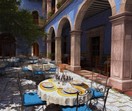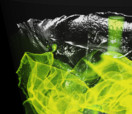Winners
The Computer Graphics Forum 2016 Cover Image has been selected by the CGF editorial board. We thanks all people who submitted this year, and hope that they will participate to the next year contest.
Winner of the Computer Graphics Forum 2016 Cover Image Contest

Jorge Jimenez
This image shows a beautiful showcase of human skin rendered using our Separable Subsurface Scattering technique.
The details about our technique are available here:
https://cg.tuwien.ac.at/~zsolnai/gfx/separable-subsurface-scattering-with-activision-blizzard/
We would like to add the list of authors of the paper and their affiliations here (the form does not permit to add all of them):
Jorge Jimenez, Universidad de Zaragoza / Activision-Blizzard
Karoly Zsolnai, Vienna University of Technology
Adrian Jarabo, Universidad de Zaragoza
Christian Freude, Vienna University of Technology
Thomas Auzinger, Vienna University of Technology
Xian-Chun Wu, Activision-Blizzard
Javier von der Pahlen, Activision-Blizzard
Michael Wimmer, Vienna University of Technology
Diego Gutierrez, Universidad de Zaragoza
Second place:

Amir Semmo (1), Daniel Limberger (1), Jan Eric Kyprianidis (2) and Jürgen Döllner (1)
(1) Hasso Plattner Institute / University of Potsdam, Germany
(2) HSHL, Germany
This image of the "San Miguel" 3D scene has been produced with our oil paint filtering technique, which is based on the methods described in our research paper "Image Stylization by Oil Paint Filtering using Color Palettes" - presented at Expressive 2015. The stylized image was automatically computed in real-time on an Android device using parameters to adjust the color grading, level of abstraction, and paint texture. Contrary to stroke-based techniques that use example-based texturing for painterly rendering, our implementation relies on non-linear filtering to simulate paint with soft color blendings, based on the smoothed structure adapted to the main feature contours. In addition, our filtering approach operates within parameter spaces to locally adjust the level of abstraction of the filtering effects, thus enabling per-pixel parametrizations by means of interactive painting.
The "San Miguel" scene was modeled by Guillermo M. Leal Llaguno.
Correspondent papers:
[1] A. Semmo, D. Limberger, J.E. Kyprianidis, and J. Döllner. Image Stylization by Oil Paint Filtering using Color Palettes. Proc. Computational Aesthetics, 149-158, 2015.
[2] A. Semmo, D. Limberger, J.E. Kyprianidis, and J. Döllner. Image Stylization by Interactive Oil Paint Filtering. Computers & Graphics, 2016. [tbp]
Third place(ex aequo):

Mathieu Le Muzic (1), Peter Mindek (2), Ludovic Autin (3), Johannes Sorger (4) and Ivan Viola (5)
(1) mathieu@cg.tuwien.ac.at
(2) mindek@cg.tuwien.ac.at
(3) ludovic.autin@gmail.com
(4) sorger@cg.tuwien.ac.at
(5) viola@cg.tuwien.ac.at
This image is a screen capture taken in real time from our visualization tool cellVIEW. The dataset used in this scene is a HIV virus in a blood serum generated by the cellPACK tool. Our tool uses instancing and level-of-detail schemes to enable the visualization of the entire dataset in real-time. The dataset comprises 70 million individual atoms. Each individual atom is rendered as a 2D depth billboard and individual molecules are abstracted using clustering techniques to generate simplified level-of-detail proxies. These techniques have been described in a paper by Le Muzic et al.: https://diglib.eg.org/handle/10.2312/vcbm20151209

Hendrik Hochstetter (1) and Andreas Kolb (2)
(1) hendrik.hochstetter@uni-siegen.de
(2) andreas.kolb@uni-siegen.de
The image shows a versatile rendering of volumetric concentration distributions of a complex fluid simulation in a mixer with inlet of green dye.
The simulation uses Smoothed Particle Hydrodynamics (SPH). The interactive visualization is realized using highly optimized data organization techniques such as view aligned perspective grids and specific screen-space error prediction techniques, that allow for high qualitative interactive visualizations of large dynamic particle sets of up to 10M particles without any preprocessing.
